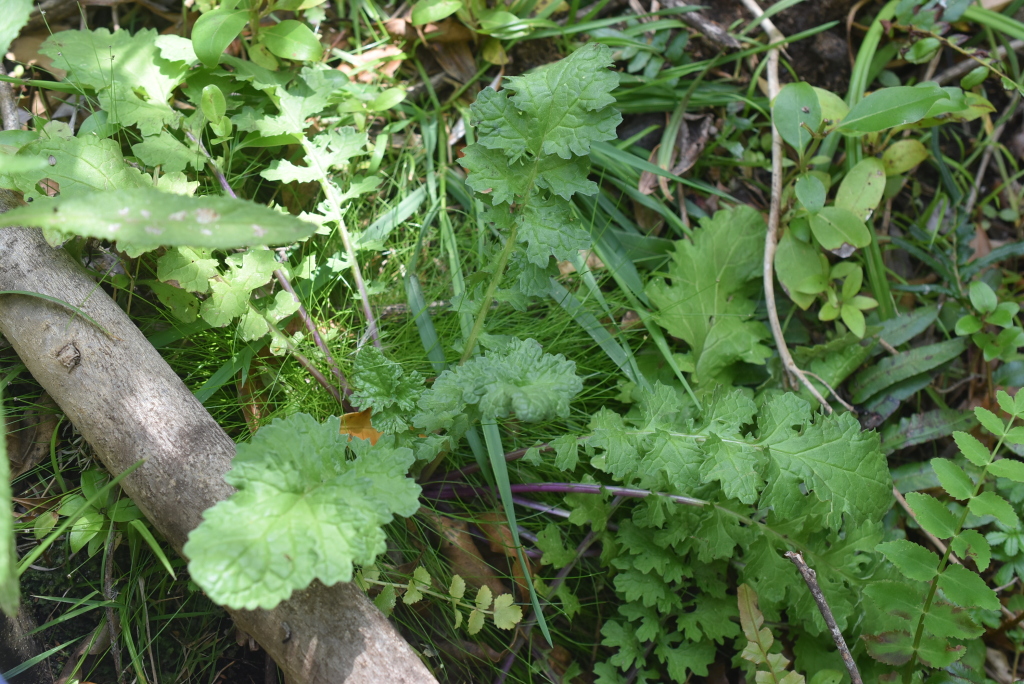Senecio jacobaea
L. RagwortGlabrous or sparsely pubescent biennial or short-lived perennial, to c. 1.5 m high. First year leaves basally rosetted, petiolate, ovate in outline, to c. 20 cm long, subentire, pinnatisect or bipinnatissect; stem leaves sessile, often auriculate, c. ovate in outline, 6–15 cm long, 3–8 cm wide, deeply pinnatisect, the lobes variably lacerated, lower lobes often distant. Inflorescence showy, corymbose, up to c. 30 cm across; capitula numerous, radiate; involucre cup-shaped to campanulate, 3.5–5 mm long, glabrous or sparsely cobwebbed at base; bracts 11–13, black-tipped; bracteoles present. Ray florets 10–15, bright yellow, ligules 4–10 mm long; disc florets 30–50, yellow. Cypselas obloid, c. 2 mm long, pale brown, those of ray florets glabrous, those of disc florets with short, blunt subappressed hairs in rows; pappus of slender white hairs 4–5 mm long, tardily deciduous Flowers Dec.–Mar.
MuM, Wim, Brid, VVP, VRiv, GipP, OtP, WaP, Gold, CVU, GGr, EGL, EGU, WPro, HSF, HNF, OtR, Strz, VAlp. Also naturalised WA, SA, NSW (sparingly established), Tas. Native to Europe. Widespread and locally abundant in cooler, high-rainfall parts of the State, principally in agricultural regions.
A declared noxious weed, known to cause death by liver damage in stock.
Walsh, N.G. (1999). Senecio. In: Walsh, N.G.; Entwisle, T.J., Flora of Victoria Vol. 4, Cornaceae to Asteraceae, pp. 941–965. Inkata Press, Melbourne.
 Spinning
Spinning



